Description
The instruction for medical use of medicine Phobos the Trade name Phobos Mezhdunarodnoye the unlicensed name Flukonazol Lekarstvennaya a form of the Capsule of 50 mg, 150 mg and 200 mg Structure One capsule contains active agent – flukonazol 50 mg, 150 mg and 200 mg, excipients: lactoses monohydrate, starch corn, silicon dioxide colloidal anhydrous, magnesium stearate, sodium lauryl sulfate, cover: gelatin, blue patent V (E131), quinolinic yellow (E104), gland (III) oxide red (E172), the titan dioxide (E171), gland (III) oxide yellow (E172) (for a dosage of 50 mg), a cover: gelatin, the titan dioxide (E171) (for a dosage of 150 mg), a cover: gelatin, the titan dioxide (E171) (for a dosage of 200 mg). The description Solid gelatin capsules 2 of No. in size, with the body and a lid of dark green color (for a dosage of 50 mg). Solid gelatin capsules 1 of No. in size, with the body and a lid of white color (for a dosage of 150 mg). Solid gelatin capsules 0 of No. in size, with the body and a lid of white color (for a dosage of 200 mg). Contents of capsules – white homogeneous powder. Pharmacotherapeutic group Antifungal drugs for system use. Triazole derivatives. Flukonazol. The ATX J02AC01 code the Pharmacological Pharmacokinetics Pharmacokinetic Properties properties of a flukonazol are similar at intravenous or oral administration. Absorption is Well soaked up in digestive tract (food does not influence absorption speed), bioavailability – 90%. Time of achievement of the maximum concentration (Cmax) after intake, on an empty stomach 150 mg – 0.5-1.5 hours. Concentration in blood plasma is in direct proportionality from a dose. Equilibrium concentration is reached by 4-5 day of reception. Distribution the Seeming volume of distribution approaches total amount of water in an organism. Communication with proteins of 11-12%. Well gets into all liquids of an organism. Concentration of active agent in breast milk, articulate liquid, saliva, a phlegm and peritoneal liquid are similar to that in plasma. Constant values in a vaginal secret are reached in 8 h after intake and keep at this level not less than 24 h. In fungal meningitis the concentration in cerebrospinal fluid makes about 80% of that in plasma. In stalemate liquid, epidermis and in a corneal layer of skin the concentration exceeding serumal (selection accumulation) are reached. At reception of a dose of 50 mg once a day, concentration of a flukonazol in 12 days made 73 mkg/g, and in 7 days after the treatment termination – 5.8 mkg/g. After intake of 150 mg for 7 day, concentration in a corneal layer of a derma makes 23.4 mkg/g, and in a week after reception of the second dose – 7.1 mkg/g. Concentration in healthy nails after 4 months of use in a dose of 150 mg once a week – 4.05 mkg/g, in the affected nails – 1.8 mkg/g. Biotransformation Flukonazol is metabolized only in insignificant degree. At introduction of a radioactive dose, only 11% are removed with urine in the changed look. Flukonazol is selection CYP2C9 and CYP3A4 inhibitor of isoenzymes, also it is CYP2C19 isoenzyme inhibitor. Elimination Elimination half-life (T1/2) – 30 hours. 80% in not changed look are removed mainly by kidneys. The clearance of a flukonazol is proportional to the clearance of creatinine (CC). The pharmacokinetics of a flukonazol significantly depends on a functional condition of kidneys, at the same time there is an inversely proportional dependence between T1/2 and MM. After a hemodialysis within 3 hours, concentration in blood plasma of a flukonazol decreases by 50%. Long elimination half-life gives the chance to accept a single dose at treatment of vaginal candidiasis and to take the drug once a day or once a week at treatment according to other indications. The pharmacokinetics in a renal failure At patients with a heavy renal failure (SKF & lt, 20 ml/min.) elimination half-life is extended from 30 to 98 o’clock, therefore, the dose decline is not required. Flukonazol leaves by means of a hemodialysis and to a lesser extent peritoneal dialysis. In three hours of a session of a hemodialysis, about 50% of a flukonazol are brought out of blood. Pharmacokinetics at elderly (of 65 years is also more senior) Reception of one oral dose of a flukonazol – 50 mg. Cmax of a flukonazol made 1.54 mkg/ml during 1.3 h after reception of a dose. The average AUC value was 76.4 ± 20.3 mkg · h/ml, and average final elimination half-life made 46.2 hours. Joint appointment with diuretics significantly does not change AUC or Cmax of a flukonazol, besides, the clearance of creatinine was 74 ml/min., percent of removal of not changed medicine with urine (0-24 hours, 22%). The renal clearance of a flukonazol at elderly people (0.124 ml/min.), as a rule, is lower, than at more young people. Thus, change of clearance rate of a flukonazol at elderly, probably is connected with deterioration in renal function. The pharmacodynamics Flukonazol is triazole of the antifungal agent. The activity of the fungal enzymes dependent on P450 cytochrome oppresses ergosterol stops transformation of a lanosterol of a fungal cell into a membrane lipid. As a result of it the permeability of a cellular membrane increases, its growth and replication is broken. Flukonazol in a dose of 50 mg a day, at reception up to 28 days did not influence concentration of testosterone in plasma at men and concentration of steroid at women of fertile age. Flukonazol in a dose from 200 mg to 400 mg a day had no clinically significant impact on the level of endogenous steroids or stimulated AKTG reaction at healthy men. Interactions with antipyrine show that one or several doses of a flukonazol of 50 mg do not influence his metabolism. Studying sensitivity in vitro In a test tube, flukonazol shows antifungal activity against the majority of clinically widespread types of Candida (including C. Albicans, S. to parapsilosis, S. tropicalis). The page of glabrata shows the wide range of sensitivity while S. is resistant krusei to a flukonazol. Flukonazol also shows activity in vitro against Cryptococcus neoformans and Cryptococcus. gattii and also endemic Blastomyces dermatiditis, Coccidioides, Histoplasma capsulatum and Paracoccidioides Brasiliensis forms. The pharmacokinetic / pharmakodinamichesky dependence Exists interrelation between values of the maximum overwhelming concentration and efficiency against experimental mycoses from the Candida SPP group. There is a linear dependence (nearly 1:1) between AUC and a dose of a flukonazol. Exists also direct though imperfect communication between AUC/dose and the successful clinical answer at treatment of oral candidiasis and to a lesser extent at a kandidemiya (it is less characteristic of the infections caused by strains from high maximum overwhelming concentration of a flukonazol). Resistance mechanisms Candida SPP has a number of mechanisms of resistance to an Azolla of antifungal drugs. Fungal strains, bought one or several mechanisms of stability and as is well-known, have the high the minimum inhibiting concentration (MIC) to a flukonazol which has an adverse effect on efficiency in clinical and natural conditions. There are messages about superinfection others (not C. Albicans) types of Candida which often are not susceptible to a flukonazol (for example, Candida krusei). In such cases the alternative antifungal therapy can be required. Indications Phobos is shown for treatment of the following diseases at adults: – a cryptococcosis, including cryptococcal meningitis and infections of other localization (including lungs, skin), as at patients with the normal immune response, and at patients with various forms of immunosuppression (including at HIV-positive patients), at organ transplantation, – generalized candidiasis, including a kandidemiya, disseminate candidiasis and other forms of an invasive candidosis infection (including infections of a peritoneum, endocardium, eyes, respiratory and urinary tract). Treatment can be carried out at patients with malignant new growths, sick intensive care units, the patients receiving cytotoxic or immunosuppressive means and also in the presence of other factors contributing to development of candidiasis – candidiasis of mucous membranes including mouth and throat (including the atrophic candidiasis of an oral cavity connected with carrying dentures), a gullet, noninvasive bronchopulmonary infections, a kandiduriya, skin candidiases, – genital candidiasis: vaginal candidiasis (sharp and chronic recuring), – a candidosis balanitis (when local therapy is not effective), – skin mycoses, including mycoses of feet, bodies, inguinal area, a chromophytosis, an onychomycosis and skin candidosis infections, – deep endemic mycoses, a coccidioidomycosis, a paracoccidioidomycosis, a sporotrichosis and histoplasmosis at patients with normal immunity. Phobos is shown for prevention of the following diseases at adults: – a recurrence of a cryptococcal infection at patients with high risk of its development (including at HIV-positive patients), – a recurrence of candidiasis of oropharyngeal candidiasis at the HIV-positive patients who are in group of high risk of emergence of a recurrence, – decrease in frequency of a recurrence of vaginal candidiasis (3 or more cases a year), – prevention of fungal infections at patients with malignant new growths which are predisposed to such infections as a result of cytotoxic chemotherapy or radiation therapy. The route of administration and doses Drug Phobos is used at adults, capsules should accept inside (to be swallowed entirely), is not dependent on meal. When choosing a dose it is necessary to consider a look and weight of a fungal infection. Treatment of the infections demanding reception of repeated doses should be continued until then when it is possible to make the conclusion (on the basis of clinical data or indicators of laboratory researches) that the activity of a fungal infection decreased. The insufficient duration of treatment can lead to a disease recurrence. Adult Indications Route of administration and doses treatment Duration Cryptococcosis Treatment of cryptococcal meningitis Load dose: 400 mg in the 1st day. In the next days: on 200 – 400 mg a day Usually 6 – 8 weeks. In life-threatening diseases, the daily dose can be increased up to 800 mg Maintenance therapy of patients with high risk of a recurrence of cryptococcal meningitis (for prevention of a recurrence). 200 mg a day Are long, a daily dose of 200 mg the Coccidioidomycosis of 200 – 400 mg a day From 11 to 24 months or are longer, depending on a condition of the patient, for some infections and especially for meningitis doses up to 800 mg a day Invasive candidiasis the Load dose can be shown: 800 mg in the 1st day. In the next days: on 400 mg a day the Recommended therapy duration at a kandidemiya – 2 weeks after the first negative take of crops of blood and disappearance of signs and symptoms of a kandidemiya. Treatment of candidiasis of mucous membranes Orofaringe-alny candidiasis Load dose: 200 mg up to 400 mg in the 1st day In the next days: from 100 mg to 200 mg a day From 7 to 21 days (before remission of candidiasis of a stomatopharynx). Is longer it is possible to apply at patients with strongly weakened immunity gullet Candidiasis the Load dose: 200 mg up to 400 mg in the 1st day In the next days: from 100 mg to 200 mg a day From 14 to 30 days (before remission of candidiasis of a gullet). Is longer it can be applied at patients with strongly weakened Kandiduriya Ot’s immunity of 200 mg to 400 mg a day From 7 to 21 days. Is longer it is possible to apply at patients with strongly weakened immunity Chronic atrophic candidiasis of 50 mg a day 14 days Chronic candidiasis of skin and mucous Ot of 50 mg up to 100 mg a day Up to 28 days. Duration of treatment depends on disease severity or initial immune resilience to an infection Prevention of a recurrence of candidiasis of mucous membranes at the patients infected with HIV which have high risk of development of a recurrence Orofaringe-alny candidiasis From 100 mg to 200 mg a day or by 200 mg 3 times a week For patients with a chronic immunodeficiency duration of treatment are determined by the attending physician Kandidoz of a gullet From 100 mg to 200 mg a day or the attending physician determines Genital candidiasis by 200 mg 3 times a week For patients with a chronic immunodeficiency duration of treatment Acute vaginal candidiasis the Candidosis balanitis of 150 mg the Single dose Treatment and prevention of recurrent vaginal candidiasis (4 and more episodes a year). On 150 mg every third day in total 3 doses (days 1, 4 and 7), then a maintenance dose: on 150 mg once a week reception Duration: 6 months. Dermatomikoz Stopa of the athlete Dermatomikoz Shingles (dermatomycosis) the Candidosis infection On 150 mg once a week or 50 mg once a day From 2 to 4 weeks, for treatment of foot of the athlete can be required up to 6 weeks Shingles From 300 mg to 400 mg once a week From 1 to 3 weeks On 50 mg From 2 to 4 weeks Shingles (onychomycosis) On 150 mg once a week once a day Treatment should be continued until the infected nail is not replaced with new. Growth of nails on hands is usually demanded by from 3 to 6 months, standing from 6 to 12 months. Growth rates can vary over a wide range (it depends on the person, his age). After successful treatment of long persistent infections, sometimes nails remain disfigured. Prevention of candidosis infections at patients with a long neutropenia From 200 mg to 400 mg the Treatment should be begun some days before an expected neutropenia and to continue within 7 days after recovery of quantity of neutrophils (when their quantity rises higher than 1000 cells by mm3). Elderly patients the Dosage has to be corrected taking into account function of kidneys (you watch the section “Renal failure’). The renal failure Correction of a single dose of drug is not required. At patients with a renal failure which it is necessary to take repeatedly the drug Phobos the initial dose from 50 mg to 400 mg, proceeding from the recommended daily dose for this indication is chosen. After reception of an initial load dose, the daily dose for further use (is defined according to the indication) and has to be adjusted if necessary according to clearance of creatinine, see the table below. Clearance of creatinine (ml/min.) Percent from the recommended dose & gt, 50,100% ≤50 (without dialysis) 50% Regular dialysis of 100% after each session of dialysis the Patients receiving regular dialysis have to receive 100% of the recommended dose after each session of dialysis, but in not dialysis days, patients have to receive the reduced dose according to their clearance of creatinine. A liver failure there Are limited data on use of drug for patients with an abnormal liver function therefore Phobos patients should appoint drug with care with abnormal liver functions. Side effects Most often (& gt, 1/10) it was reported about such side reactions as a headache, abdominal pain, diarrhea, nausea, vomiting, increase in blood of alaninaminotranspherase, aspartate aminotransferase, alkaline phosphatase, rash. The following side reactions were observed during treatment flukonazoly with the following frequency: very often (≥1/10), it is frequent (≥1/100 to & lt, 1/10), infrequently (≥1/1000 to & lt, 1/100), is rare (≥1/10000 to & lt, 1/1000), is very rare (& lt, 1/10000), it is not known (it cannot be estimated on the available data). Often (from ≥1/100 to ≤1/10) – a headache – nausea, vomiting, an abdominal pain, diarrhea – increases in level of alkaline phosphatase, serumal level of aminotransferases (ALT and nuclear heating plant), anemia – rash Infrequently (from ≥1/1.000 to ≤1/100) – an anemia – insomnia, drowsiness – spasms, dizziness, paresthesia, change of taste – vertigo – dyspepsia, a constipation, a meteorism, dryness in a mouth, a loss of appetite – a cholestasia, jaundice, increases in level of bilirubin – an itching, medicinal rash (including persistent medicamentous rash), a toxidermia, urticaria, increase sweating, – myalgia – fatigue, an indisposition, weakness, fever Seldom (from ≥1/10.000 to ≤1/1.000) – an agranulocytosis, a leukopenia, neuropathy, thrombocytopenia – an anaphylaxis – a gipertriglitseridemiya, a hypercholesterolemia, a hypopotassemia – a tremor – tachycardia, trembling/ventricular fibrillation, increase in an interval of QT – dyspepsia, a meteorism, dryness in a mouth – gepatotoksichnost
, including exceptional cases with a lethal outcome, a liver failure, hepatocellular necrosis, hepatitis, hepatocellular damages – a toxic epidermal necrolysis, Stephen-Johnson’s syndrome, sharp generalized exanthematous pustulez, exfoliative dermatitis, a Quincke’s disease, a face edema, an alopecia. At patients with AIDS or malignant new growths at treatment flukonazoly and similar drugs changes of indicators of blood, function of kidneys and a liver were observed, however clinical value of these changes and their connection with use of medicine is not established. Contraindications – hypersensitivity to a flukonazol, other components of drug or azolny substances with similar to a flukonazol structure, – a concomitant use of a terfenadin during repeated use of Phobos in a dose of 400 mg/days and more, – a concomitant use of the medicines extending an interval of QT and which are metabolized by means of CYP3A4 enzyme, such as tsizaprid, astemizol, Pimozidum, quinidine, Amiodaronum and erythromycin – hereditary intolerance of a galactose, insufficiency of lactose or glyukozo-galaktozny malabsorption, – pregnancy and the period of a lactation, – children’s and teenage age up to 18 years. Medicinal interactions Contraindicated simultaneous use with following medicines Amiodaronum: simultaneous use with Amiodaronum can lead to delay of metabolism of Amiodaronum and cause lengthening of an interval of QT. Simultaneous use of drug Phobos and Amiodaronum contraindicated (cm section “Special Instructions”). Tsizaprid: messages about cardiovascular disturbances, including lengthening of an interval of QT at patients who at the same time received flukonazol and tsizaprid arrived. Simultaneous use of a flukonazol in a daily dose of 200 mg and a tsizaprida on 20 mg four times a day causes significant increase in concentration in plasma of a tsizaprid and lengthening of an interval of QT. The accompanying treatment flukonazoly and tsizapridy is contraindicated. Terfenadin: at the patients receiving imidazole azoles in combination with terfenadiny the serious cardiac arrhythmias connected with lengthening of an interval of QTc developed. In one research using a daily dose of a flukonazol of 200 mg the lengthening of an interval of QTc was not noted. In other research with use of a daily dose of a flukonazol of 400 mg and 800 mg it was revealed that flukonazol in a dose of 400 mg a day and more, at a concomitant use, considerably increases level in blood plasma of a terfenadin. Combined use of a flukonazol in doses of 400 mg or more with terfenadiny is contraindicated. Use of a flukonazol in doses lower than 400 mg a day together with terfenadiny should be controlled carefully. Astemizol: simultaneous use of a flukonazol with astemizoly can reduce clearance of an astemizol, and increase in concentration in blood plasma of an astemizol can lead to lengthening of an interval of QT and is rare to appearance of zhizneugrozhayushchy arrhythmia. Combined use of drug Phobos and astemizola contraindicated. Pimozidum: though this interaction was not studied under natural conditions or in a test tube, Phobos with Pimozidum can lead the accompanying drug use to Pimozidum metabolism delay. Increase in concentration of Pimozidum in blood plasma can lead to lengthening of an interval of QT and in rare manifestations to zhizneugrozhayushchy arrhythmia in this connection combined use of drug Phobos and Pimozidum contraindicated. Quinidine: though this interaction was not studied under natural conditions or in vitro, simultaneous use of drug of a flukonazol with quinidine can lead to quinidine metabolism delay that in turn can cause lengthening of an interval of QT and in rare instances to manifestation of arrhythmia. Simultaneous use of drug Phobos and quinidine contraindicated. Erythromycin: simultaneous use of a flukonazol and erythromycin can increase risk of cardiotoxicity (lengthenings of an interval of QT, trembling/ventricular fibrillation) and to lead as a result to sudden death from cardiac arrest. Combined use of a flukonazol and erythromycin contraindicated. Simultaneous use of the following Galofantrin medicines is not recommended: flukonazol can increase concentration of a galofantrin in plasma because of the oppressing effect on CYP3A4. Simultaneous use of a flukonazol (drug Phobos) and the galofantrina can increase risk of cardiotoxicity (lengthening of an interval of QT, trembling/blinking) and as a result of sudden death from cardiac arrest. Such combination should be avoided. The simultaneous use of medicines demanding observance of precautionary measures and in need of correction of a dose of drug Phobos Hydrokhlorotiazid: simultaneous use of a hydrochlorothiazide and flukonazol increases by 40% concentration of a flukonazol in plasma, however this increase Phobos does not demand change of a dosage of drug from the patients receiving at the same time diuretics. Rifampicin: simultaneous use of a flukonazol and rifampicin leads to decrease in AUC (the area under a curve concentration time) for 25% and to 20% to decrease in elimination half-life of a flukonazol. At the patients receiving the accompanying therapy by rifampicin the increase in a dose of drug Phobos can be required. Interactions of oral forms of a flukonazol at its concomitant use with food, Cimetidinum, antacids and also after total body irradiation after bone marrow transplantation showed that these factors have no clinically significant impact on absorption of a flukonazol (drug Phobos). Drug influence Phobos on other Flukonazol medicines is powerful inhibitor of an isoenzyme of P450 (CYP) 2C9 cytochrome and moderate inhibitor of CYP3A4 enzyme, besides it is also CYP2C19 isoenzyme inhibitor. Except the interactions provided below there is a risk of increase in plasma concentration of other drugs which are metabolized CYP2C9 and CYP3A4 enzymes at simultaneous use with drug Phobos therefore, it is necessary to show care when using these combinations, and for patients the careful control is necessary. Because of long elimination half-life the oppressing effect of drug of a flukonazol on fermental systems remains within 4-5 days after the termination of its reception. Alfentanil: at simultaneous therapy with drug Phobos is observed decrease in clearance and volume of distribution and also lengthening of T½ (elimination half-life) of an alfentanil. The possible mechanism of action is oppression flukonazoly CYP3A4 enzyme in this connection, dose adjustment of an alfentanil can be required. Amitriptyline, nortriptilin: flukonazol strengthens effect of amitriptyline and a nortriptilin. Concentration of a 5-nortriptilin and/or S-amitriptyline can be measured in the beginning of combination therapy and in a week after an initiation of treatment. If necessary, amitriptyline doses / nortriptilina have to be corrected. Amphotericinum B: at use in common of a flukonazol with Amphotericinum B at patients with the normal and weakened immunity the following results are possible: small additional antifungal action in the system infections caused by C. Albicans, any interaction in the intracranial infection caused by Cryptococcus neoformans, antagonism of two drugs in the system infection caused by A. fumigatus. The clinical value of results is definitely not known. Anticoagulants: flukonazol at simultaneous use with warfarin causes lengthening of a prothrombin time for 12%. As well as at use of other azolny antifungal drugs, it was reported about episodes of the bleedings (hematomas, bleedings from a nose, gastrointestinal bleedings, a hamaturia and a melena) connected with lengthening of a prothrombin time at the patients receiving flukonazol along with warfarin therefore careful control of a prothrombin time is necessary for the patients accepting anticoagulants of a coumarinic row (warfarin dose adjustment can be also required). Benzodiazepines (short action), i.e. midazolam, to triazoles: after oral administration of midazolam, flukonazol caused the significant increase in concentration of midazolam which is shown in the form of psychomotor effects. Concomitant oral administration of a flukonazol of 200 mg and 7.5 mg of midazolam raises AUC midazolam by 3.7 times, and its half-life period by 2.2 times. At reception of a flukonazol in a daily dose of 200 mg along with oral administration of a triazolam in a dose of 0.25 mg, AUC of a triazolam the elimination half-life by 2.3 times raised by 4.4 times, and. Potentiation and lengthening of effect of a triazolam was observed at its simultaneous treatment with flukonazoly. At simultaneous use of benzodiazepines by the patients receiving flukonazol it is necessary to consider the possibility of a dose decline of benzodiazepines, patients have to be under appropriate control. Carbamazepine: flukonazol metabolism of carbamazepine oppresses and increases by 30% concentration of the last in blood serum. In this regard there is a risk of development of karbamazepinovy toxicity and dose adjustment of carbamazepine depending on its concentration / effect can be required. Blockers of calcium channels: some antagonists of calcium channels (nifedipine, isradipin, amlodipin, verapamil and felodipin) are metabolized by CYP3A4 enzyme. Flukonazol can increase considerably system influence of antagonists of calcium channels therefore during treatment the frequent monitoring of side effect of drugs is recommended. Tselekoksib: at simultaneous therapy, drug Phobos (200 mg a day) and tselekoksiby in a dose of 200 mg, noted increase in Cmax of a tselekoksib for 68%, AUC for 134%. Considering it, at simultaneous use of drug Phobos with tselekoksiby, reduction twice of a dose of a tselekoksib can be required. Cyclophosphamide: combination therapy of cyclophosphamide and a flukonazol leads to increase in levels of bilirubin and creatinine in blood serum. This combination can be used only at stringent control of levels of bilirubin and creatinine in blood serum. Fentanyl: one fatal case from intoxication by fentanyl because of possible development of interaction between fentanyl and flukonazoly was celebrated. It was shown what flukonazol considerably slows down fentanyl removal. The increased concentration of fentanyl can lead to respiratory depression, it should be considered and to watch carefully the patient for early detection of symptoms of respiratory depression, correction of a dosage of fentanyl can be also required. Inhibitors A-reductases hydroxymethylglutaryl coenzyme (GMG-KoA-reduktazy): in case of simultaneous use of a flukonazol with GMG-KoA-reduktazy inhibitors (atorvastatin, simvastatin) metabolized by means of CYP3A4, or CYP2C9 (fluvastatin), raises risk of development of a myopathy and acute necrosis of skeletal muscles (rhabdomyolysis). If simultaneous therapy by these drugs is necessary, the patient has to be under observation for early detection of symptoms of a myopathy and a rhabdomyolysis and also control of level of a creatine kinase has to be carried out. Intake of GMG-KoA-reduktazy inhibitors should be stopped if substantial increase of level of a creatine kinase is noted or if it is diagnosed or the myopathy/rhabdomyolysis is suspected. Immunodepressants (cyclosporine, everolimus, sirolimus and takrolimus, etc.). Cyclosporine: flukonazol considerably increases concentration in plasma and AUC cyclosporine. At simultaneous therapy flukonazoly in a dose of 200 mg a day and cyclosporine (2.7 mg/kg/days) 1.8-fold increase in AUC cyclosporine was noted. Such combination can be applied only in case of a cyclosporine dose decline depending on its concentration in blood plasma. Everolimus: though this interaction was not studied under natural conditions or in vitro, flukonazol can increase serumal concentration of an everolimus by oppression of CYP3A4. Sirolimus: flukonazol increases plasma concentration of a sirolimus, presumably, by oppression of metabolism of a sirolimus with participation of fermental CYP3A4 systems and the R-glycoprotein. This combination can be applied if dose adjustment of a sirolimus depending on effect/concentration indicators is carried out. Takrolimus: at the expense of metabolism inhibition with participation of CYP3A4 in intestines, flukonazol can increase to 5 times concentration of the oral accepted takrolimus in blood serum. When takrolimus it is entered intravenously, significant changes of pharmacokinetics were not observed (the increased levels of a takrolimus are connected with manifestations of its nephrotoxicity). The dose of orally entered takrolimus, depending on its concentration in blood, needs to be reduced. Lozartan: flukonazol metabolism of a lozartan and its active metabolite (E-31 74) which is responsible for antagonism to angiotensin II receptors oppresses therefore patients during treatment need to control arterial blood pressure constantly. Methadone: flukonazol increases concentration of methadone in blood serum therefore methadone dose adjustment can be required. Non-steroidal anti-inflammatory drugs (NPVP): Cmax and AUC of a flurbiprofen increased by 23% and 81%, respectively, at co-administration with flukonazoly (in comparison with monotherapy flurbiprofeny). The same way, Cmax and AUC pharmacological of active isomer [S-(+) – an ibuprofen] were increased by 15% and 82%, respectively, when flukonazol it was appointed along with racemic mix of an ibuprofen (400 mg), in comparison with monotherapy by an ibuprofen. Phobos can strengthen system influence of other NPVP which are metabolized by means of CYP2C9 (for example, Naproxenum, to lornoksika, swept
to Develop
Additional information
| Ingredient |
|---|





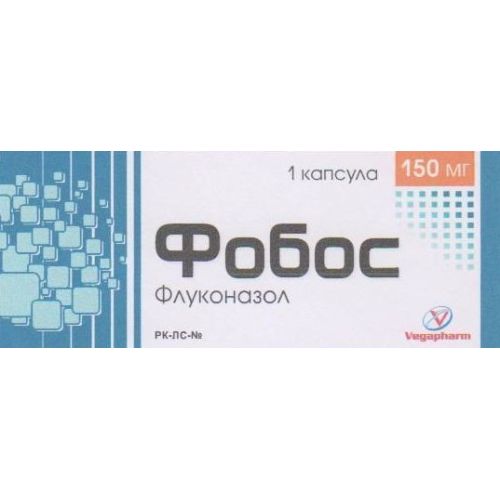
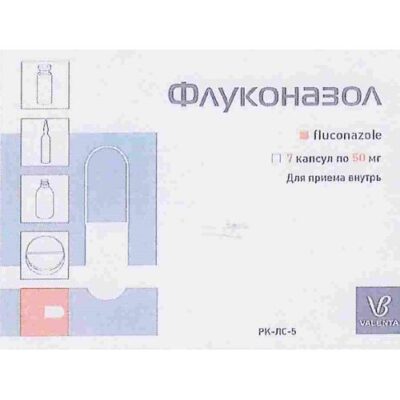
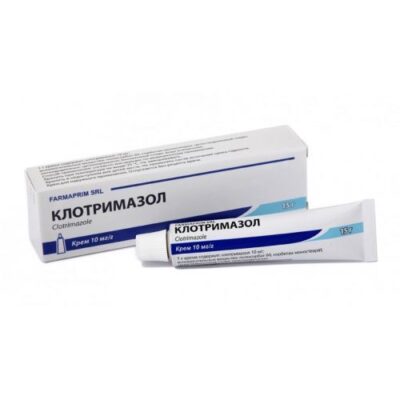
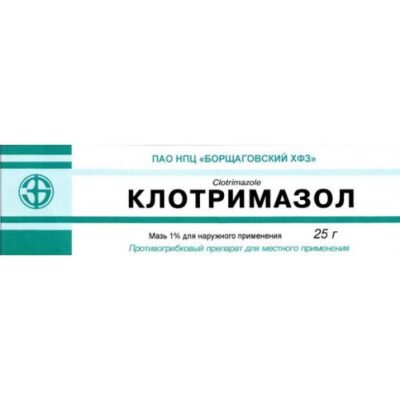
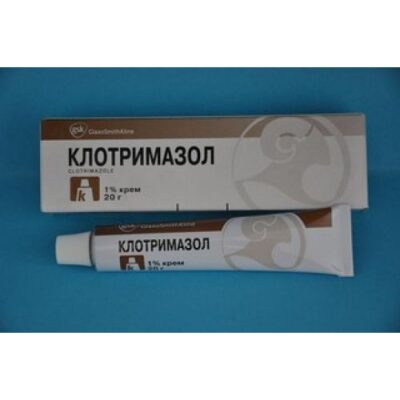
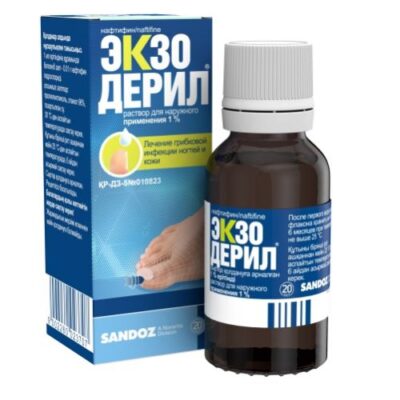
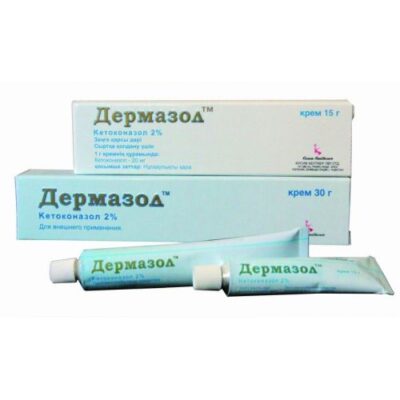
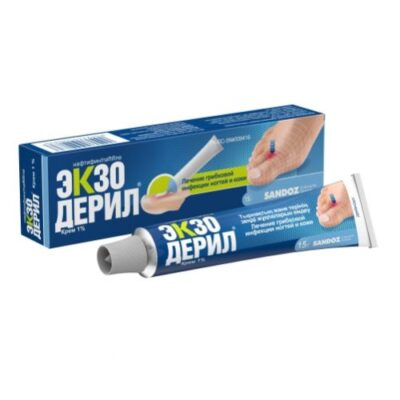
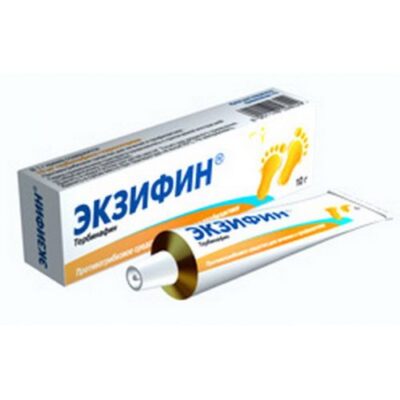
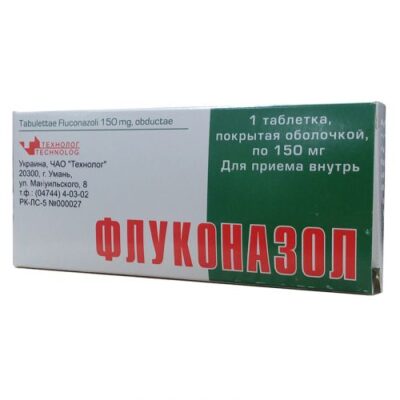
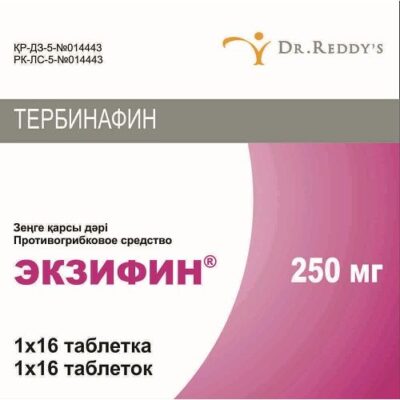






Reviews
There are no reviews yet.